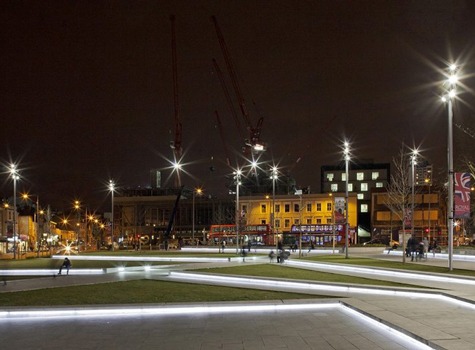Outdoor lighting is a necessity in our society. From amenities like streetlights to facade lighting and promotional lighting, our towns and cities are illuminated in a myriad of ways.
There are many things to consider when designing and implementing exterior lighting. Primary thoughts should be centred around the environment itself and human activity within the space.
Types of exterior lighting
Lighting the outdoors can be beneficial in many ways, from enabling people to perform work to providing safety and visual enhancement. Lighting for safety is one of the most common purposes of exterior lighting. Street and path lighting belong in this category as well as carpark lighting and even your front porch. Lighting for safety generally demands that the space is evenly lit.
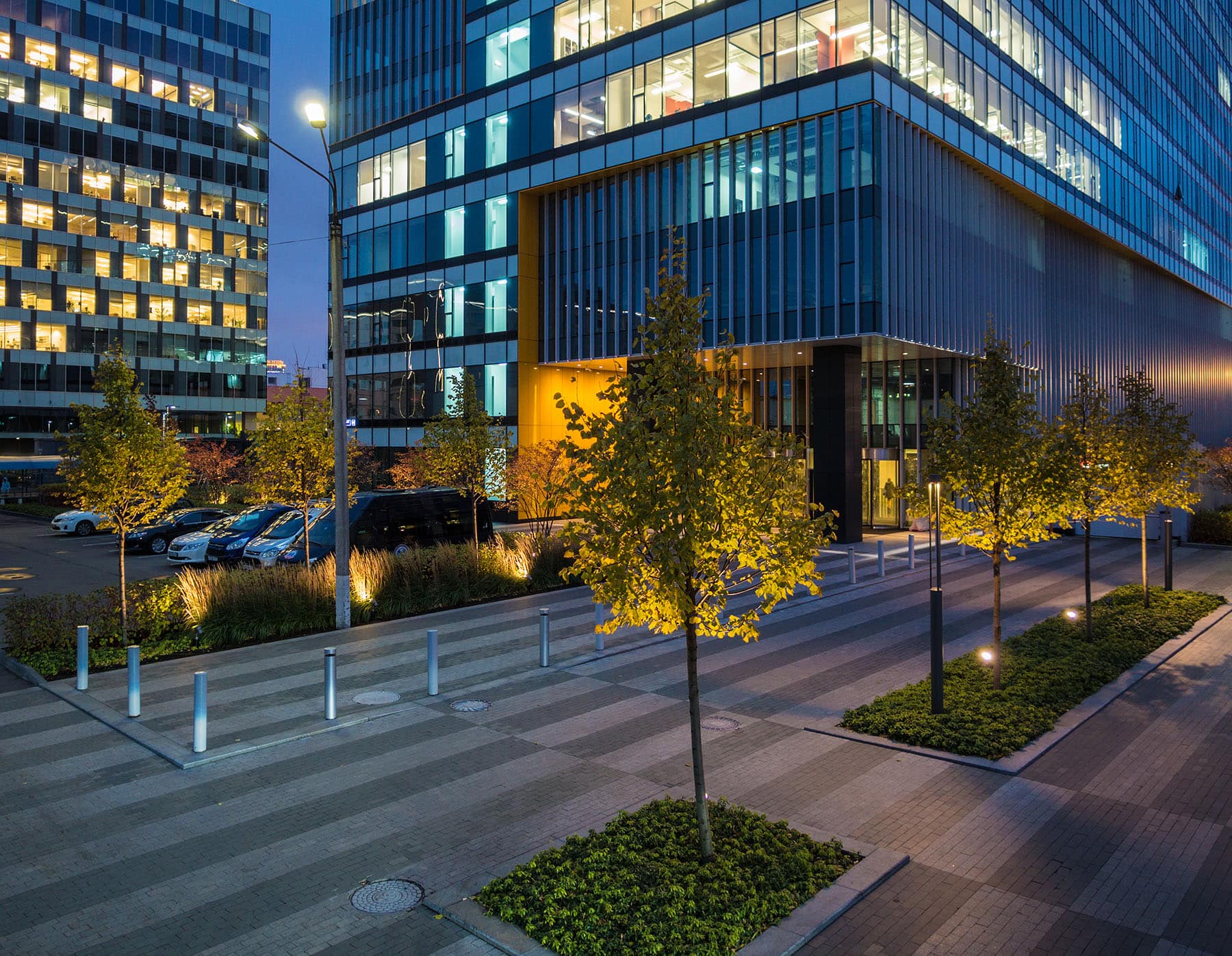
Promotional lighting comprises of façade and event lighting as well as highlights for sculptures. The idea is to create beacons of interest with dramatic shadow and lights effects using white or coloured light to attract the public.

Lighting for comfort is used in places of calm, where people should slow their pace of life and socialise. Pockets of warm low-level light create comfortable surroundings. Under bench lighting and small bollards can be used as well as portable table lamps.
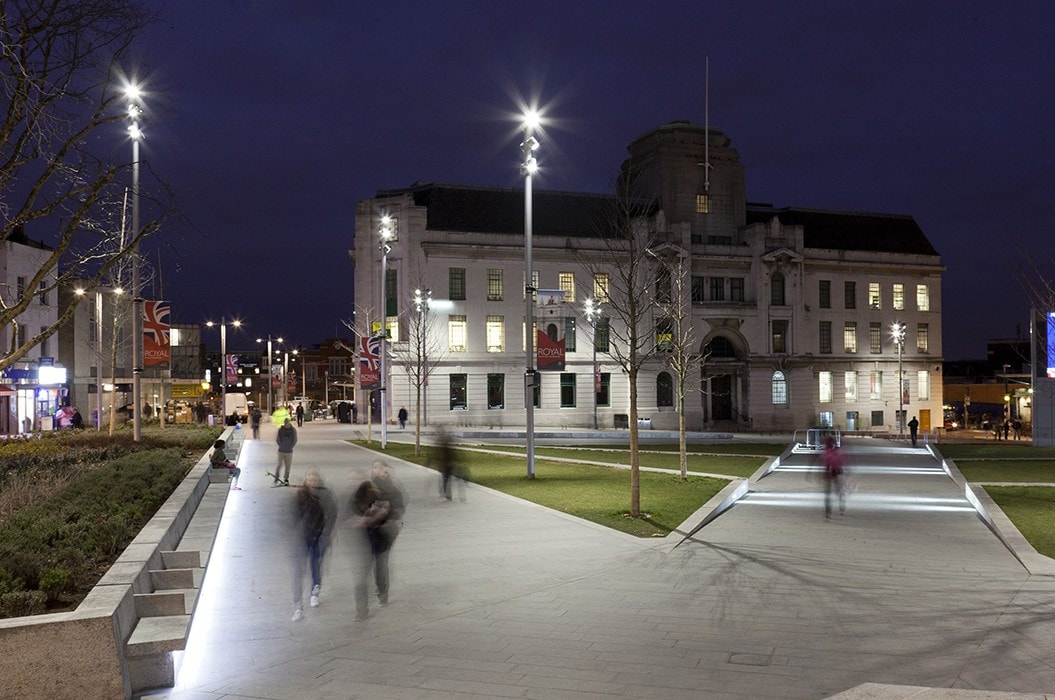
Categories of exterior lighting
- Private lighting – Lighting for privately owned spaces can be as creative and free as the client’s design spirit. Though exterior light fittings still need to be compliant with the regulations for exterior spaces.
- Public lighting – Lighting for public spaces requires compliance with regulations for safety and security. Average light levels and uniformity are as important as individual council guidelines. Lighting designs should be as creative as possible within the restrains of the regulations.
Considering the context of outdoor light
Context is everything when it comes to outdoor lighting. As a general rule: “Less is more.” The human eye adapts to low light levels fairly quickly. Over-lit exterior spaces may be not just a waste of energy but also a source of discomfort, visual disturbance and even contribute to light pollution.
In an outdoor environment, it’s important to think carefully about the character and history of the space and its surroundings. The façade of a church demands a differently lit façade to that of a shopping centre. Urban and rural lit environments may vary for example, as will public and private spaces. It’s essential to consider factors such as the safety and comfort of those using the space too, alongside the impact of light on the surrounding environment. The climate and location in the world will also play a part in determining your lighting solutions. Think about city development and the economic growth of the area for example.
Planning and implementing outdoor lighting
A long list of practical issues will be considered by the LAPD team when planning and implementing exterior lighting for a client.
These include:
- Clients perception of light. Does the client or architect have a specific brief and image of the finished lighting design project in mind, or has a primary design goal been established? If so, our team will collaborate towards a shared vision.
- The placement of light and drivers. Should be hidden from view and out of reach from the public. Take Brick Lane Minaret’s decorative totems as an example – designed to stand out at every viewpoint, leading visitors to the centre of Brick Lane, whilst being readily maintained.
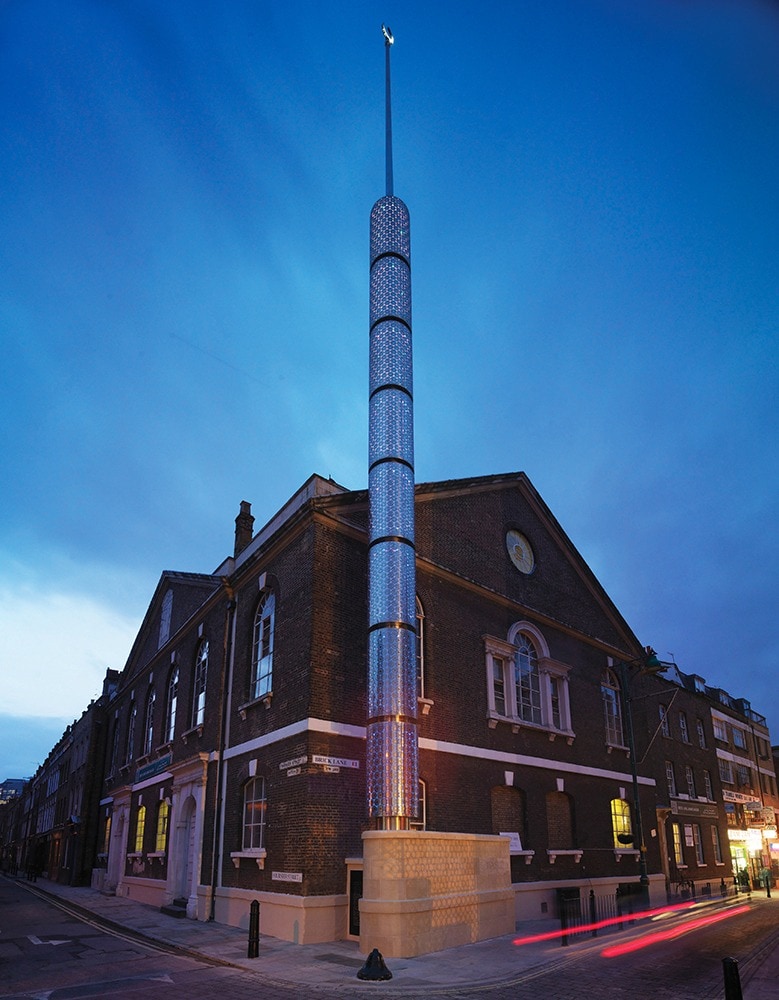
- Light colour. The colour of your lighting can dramatically affect the mood you create. Will you opt for warm white, cool white, RGB or RGBW? As well as the colours themselves, our specialist team of lighting consultants consider the balance of brightness, contrast and saturation of colour.
- Mood and effect. Do you want the lighting to be soft or dramatic, to give emphasis to certain architecture or provide general brightness? As part of Switched On London, we took inspiration from the warmth of candlelight to illuminate Southwark Cathedral. In contrast, RGB light (red, green and blue LEDs that are used to produce over 16 million hues of light) is widely used in cities such as Dubai or Singapore.
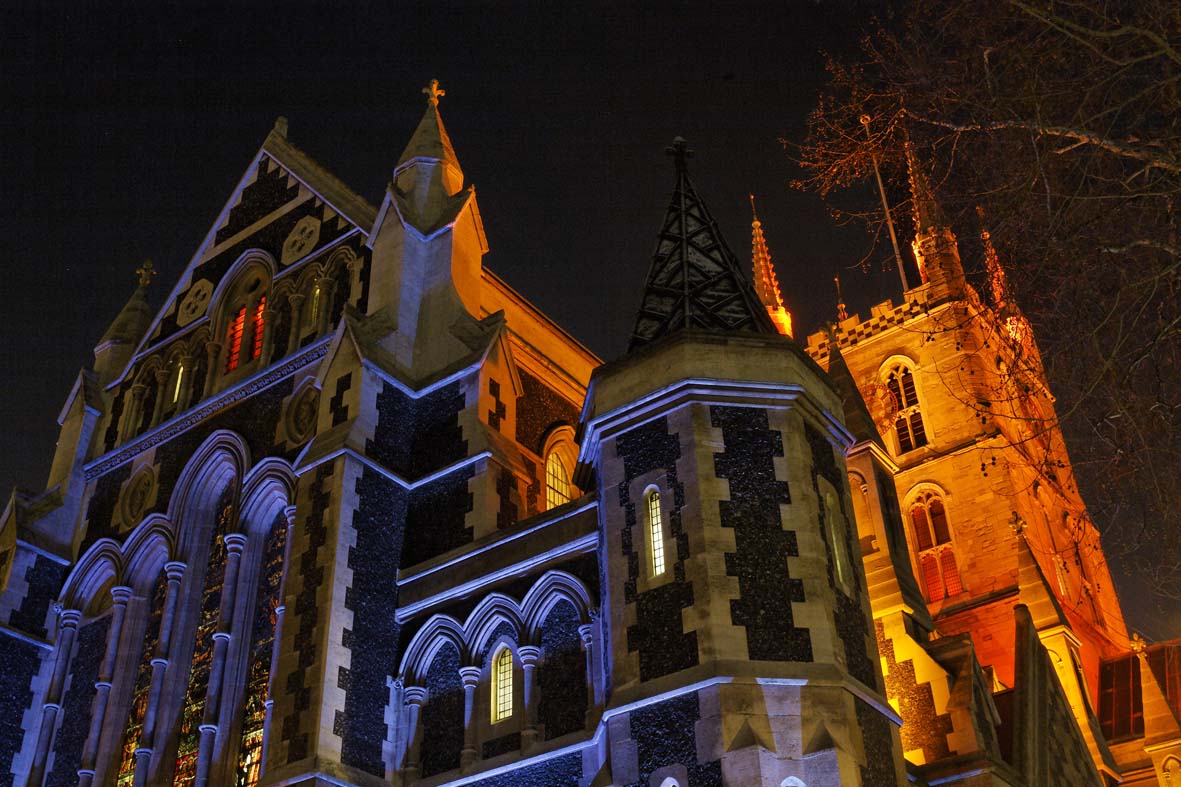
- Light rendering. Some light renders colour better than others, so consider using CRI 80 where relevant. Think about lighting a public carpark for example – you would want drivers to be able to recognise the colour of their car.
- Brightness. We’ll carefully consider the brightness, contrast and saturation of the light source, as well as the reflective surface and the surrounding surfaces. This was important when lighting Arcus III, an office building that was designed to stand out in the Moscow skyline.
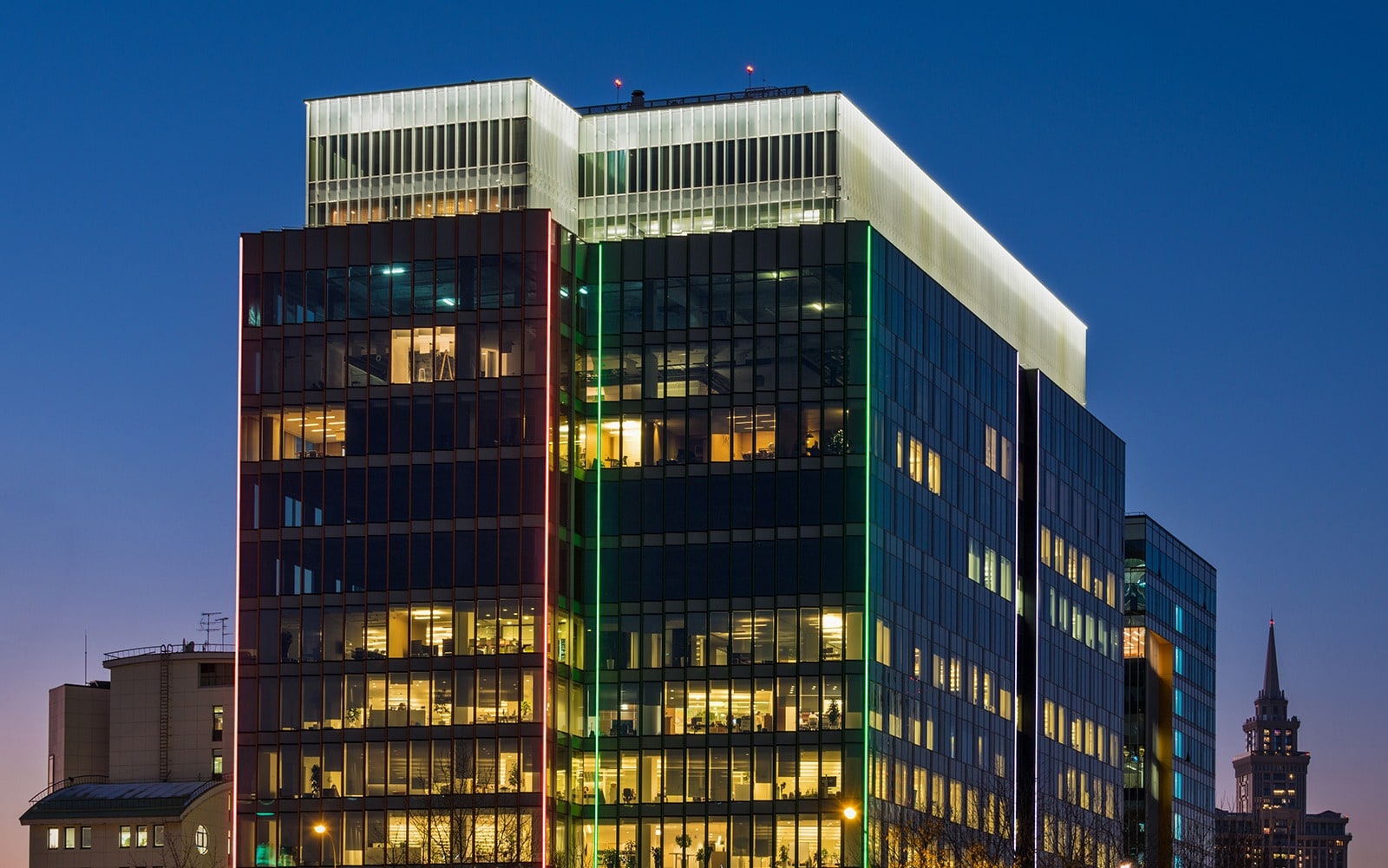
- Shadows. Should they be avoided, or created for particular effect? Utilising contrast and shadows within an architectural lighting design project is key to creating an inspiring and intriguing space.
- Building a hierarchy of lit elements. Adopting a variety of beam angles and intensities to light a façade creates diversity and interest.
- Optics of the light source. What’s the best beam angle? We are testing the light fittings to avoid light sources with colour shift, inconsistent light distribution and glare.
- IP rating. IP rating (Ingress protection against water and dust) gives an indication, in what environment the light fitting can be used.
- Light fitting. Is it adjustable? Where and can it be mounted? What maintenance will it need and can it withstand environmental conditions such as temperature? Whereas wet rated fixtures can be directly exposed to wind and rain, damp rated fixtures cannot and are better suited for lighting patios and pergolas.
- In-ground fittings. Are they slip resistant?
- Safety and security. To protect against vandalism, can the light fittings be placed out of reach or made tamper-proof? Consider installing motion sensor lights – a great option for high-traffic areas such as walkways.
- Accessories. Are glare shields or honeycomb louvres required?
- Control of all light sources. Give thought to factors such as dimming, dynamic control, scene setting and curfew times.
- Energy saving. Consider dusk to dawn lights that automatically turn on and off with the setting and rising of the sun, as well as motion-sensor and solar-powered lighting.
- Maintenance. Is the lifetime of the LED as long as possible? Is the fitting and the driver easily accessible for cleaning and replacement?
- Compliance with legal regulations. We’ll ensure that your exterior lighting is fully compliant with all relevant legislation, including regulations from the Chartered Institution of Building Services Engineers, BSi, Building Regulations Part L, and the Institute of Lighting Professionals.
Things to avoid
It’s important to hire experts in exterior lighting, in order to avoid:
- Over lighting a space. Remember: “Less is more”, but this requires considerable thought and creativity.
- Where possible, avoid glare, skyglow, light trespass and clutter to minimise light pollution.
- Disturbing the surrounding environment, including wildlife and neighbouring residents.
- Direct view into the light source.
- Colour shift in light beams and light sources over time.
- Short lifespan fittings.
- Wasting energy with high wattage fittings.
Find out more about our work in exterior lighting and contact us for assistance with your next outdoor lighting project.
